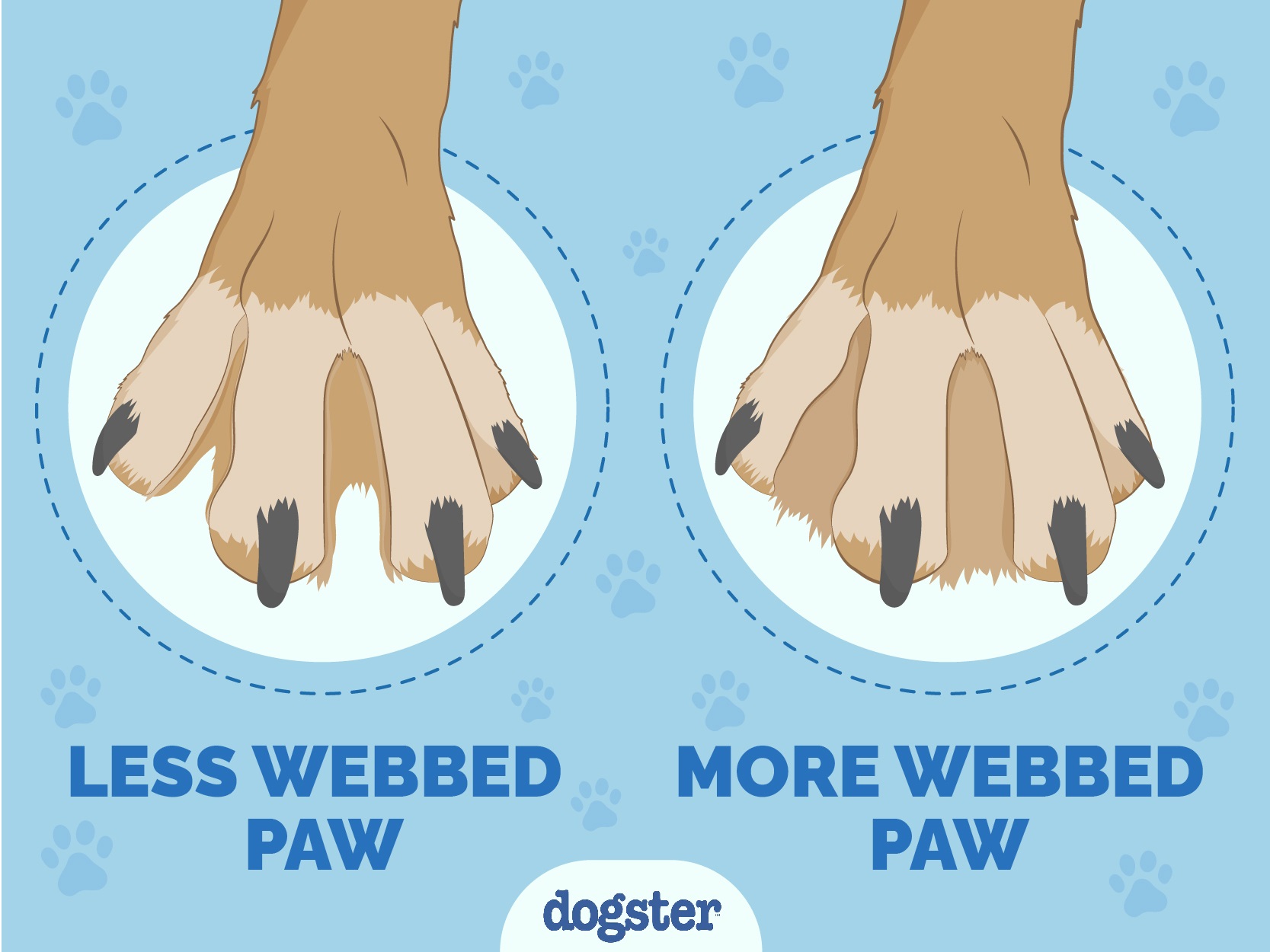In this article
Have you ever looked closely at a Beagle’s feet? If you have, you might have noticed that their toes are connected by a thin membrane. But does this count as a Beagle having webbed feet?
Technically, it does. The AKC refers to this membrane as “webbing,” and all dogs have it to a certain degree.1 It’s essentially the same as what humans have between their fingers: Take a quick look at your hands and the tiny bit of skin between each finger. This is essentially what a Beagle has between their toes.
But the membrane on a dog’s feet isn’t exactly the same type of webbing that a duck has, so it isn’t true webbing. It’s also more prominent in water-retrieving dogs, as it aids in swimming, and in dogs bred for hunting. Beagles have feet that are slightly webbed, but it’s not as prominent as those of a water-retrieving dog. In fact, the AKC’s breed standard for the Beagle doesn’t mention webbing at all.2
So, what are the advantages of having webbed feet other than helping the dog swim better? Does it cause your Beagle to have disadvantages?

The Advantages of Webbed Feet
The webbing on a dog’s feet can be used to help them swim because their paws essentially become mini-paddles that aid them in moving through water. So, the more webbing that a dog has on their foot, the better a swimmer they will be. Webbing can also be useful to dogs that are diggers, as it can help with digging. In addition, it helps provide stability for breeds that are active and move around a lot by increasing the surface area and sturdiness of each foot.
For the Beagle, this means they can easily make their way over hunting trails, stay stable as they run and play, and dig when they go into digging mode (and this breed is known for their love of digging, which is fun for them but a tragedy for your yard).

The Disadvantages of Webbed Feet
There are several advantages to a dog having webbed feet, but unfortunately, there are also a few drawbacks.
The first is the tendency for parasites to hang out in the webbing. Whether it’s fleas or ticks, these unwanted visitors often make a home in toe webbing, as it’s a terrific place for them to hide. So, if you have a Beagle, you’ll want to check their paws often to ensure that the webbing is clean and free of these parasites.
Another unfortunate side effect of webbed feet is that abscesses can easily occur. These blisters show up when the little bristly hairs on the webbing get pushed back into the hair follicle, resulting in infection. Abscesses can be quite painful for your pup, so if you see your dog constantly licking one of their paws, check to see if an abscess might have occurred.
Finally, foreign objects can get lodged in the toe webbing on your pet’s feet. These could be pretty much anything—snow and ice, tiny shards of glass, small stones, etc.—and can cause pain and inflammation. So, be sure you always check your Beagle’s paws after long walks, and if you find something stuck in the webbing, know that tweezers (or a visit to the vet) may be needed to remove it.


Final Thoughts
Beagles technically do have webbed feet, as all dogs do. But it isn’t precisely the same kind of webbing that you’d see on a duck. Instead, it’s more like the skin that you’ll find between your own fingers. A Beagle has a bit more prominent webbing than most other breeds, though, as they’re a hunting dog, and the webbing offers several advantages in that field. However, there are also some negatives to webbed feet, such as parasites or foreign objects getting lodged between the toes. So, check your Beagle’s paws often to protect them!
See also:
- Do Beagles Make Good Pets?
- Does a Bernese Mountain Dog Have Webbed Feet?
- Do All Dogs Have Webbed Feet?
Featured Image Credit: Thicha6327, Shutterstock


















